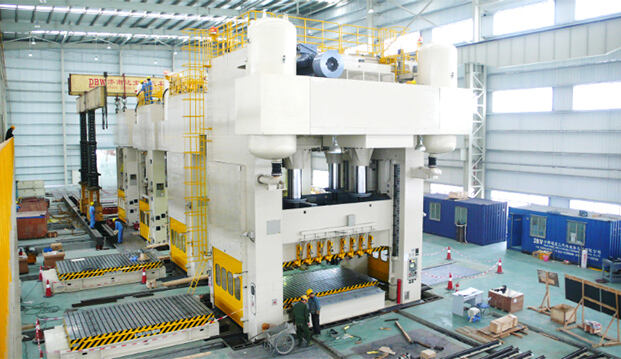
In the aviation industry, stamping stands as a cornerstone manufacturing technique, pivotal in crafting various components and structural elements essential for aircraft assembly. This sophisticated process harnesses stamping techniques to meticulously cut, shape, and process metal materials, ensuring the fabrication of components that adhere to stringent quality and performance standards. Typically conducted within specialized stamping production lines, the stamping process encompasses multiple meticulous steps, with each stage contributing to the precision and reliability of the final product.
Punching and Cutting represent the foundational steps in aviation stamping, where holes are precisely punched, and metal sheets are expertly cut to form the basic outlines of components such as the casing and wings of aircraft. This initial phase sets the stage for subsequent manufacturing processes, laying the groundwork for the intricate shaping and assembly of aircraft components.
Deep Drawing emerges as a crucial technique within aviation stamping, facilitating the formation of deep concave or convex parts on metal materials. These meticulously crafted sections, integral to an aircraft's casing, contribute to its structural integrity and aerodynamic performance, underscoring the importance of precision and accuracy in the stamping process.
Bending, another essential aspect of aviation stamping, involves shaping metal through precise bending techniques to meet the structural requirements outlined in aircraft design. From forming the wings of an airplane to shaping fuselage components, bending plays a pivotal role in realizing the complex geometries and configurations essential for aircraft functionality.
Forming constitutes a fundamental stage in aviation stamping, wherein metal materials are expertly stamped into the required shapes for manufacturing structural components of aircraft. This meticulous shaping process ensures the seamless integration of components within the aircraft structure, contributing to its overall stability, performance, and safety.
Stretching represents a specialized aspect of aviation stamping, employed to form stretched components on metal sheets, such as the windows of an aircraft. This precise stretching process ensures the uniformity and integrity of components, enhancing their functionality and durability in demanding aviation environments.
The manufacturing of aircraft components demands the utmost precision, lightweight design, and unparalleled material strength, underscoring the indispensable role of stamping processes in the aviation industry. By enabling precise control over complex geometric shapes and configurations, stamping technologies empower manufacturers to achieve unparalleled levels of production efficiency, while adhering to rigorous industry standards and fulfilling the stringent quality requirements inherent in aircraft manufacturing. As a result, stamping emerges as a vital manufacturing technology, driving innovation and excellence in the production of aircraft components essential for the safety, performance, and reliability of modern aviation systems.